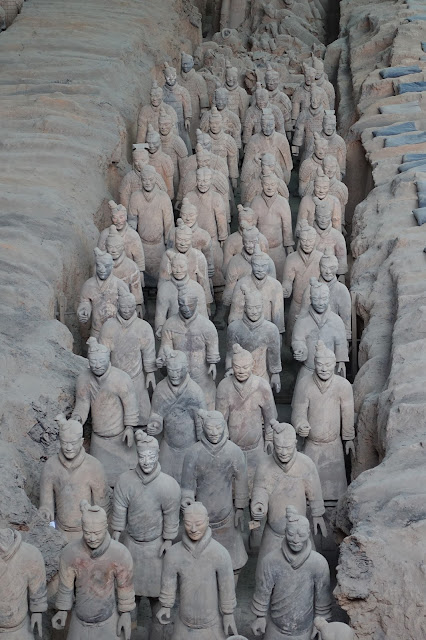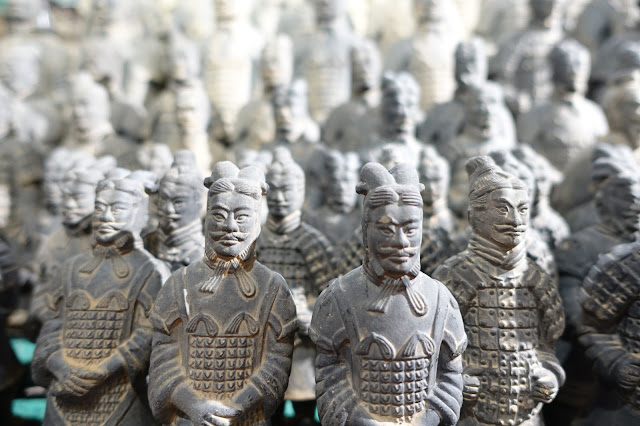Xi An - Sep 2015
Qin Shi Huang Mausoleum 秦始皇陵
The Mausoleum of Emperor Qin Shi Huang is the largest imperial tomb in China with the richest buried objects. It is situated about 1.5 km east from the Terracotta Warrior Museum.
The tomb mound itself at present days still remains largely not excavated but a number of high technologies were used to explore part of the site. The underground museum has been located at the center of the mound.
According to the scientific exploration and partial excavation, they found a significant amount of metal is present in the underground which constituted a very good drainage system that appeared did not has any flood incident before.
However, some believe that if the underground museum is fully excavated, it would cause the mercury to volatilize quickly. China's current technology is not able to deal with this large scale of the underground excavation yet.
Qin Shi Huang Mausoleum 秦始皇陵
Entrance fee: March 1 - end of November: CNY150; December 1 - end of Februay: CNY120
Opening hours: March 16 to November 15: sell ticket from 08:30 to 17:00, stop check-in at 18:35;
November 16 to next March 15: sell ticket from 08:30 to 16:30, stop check-in at 18:05
Qianling Mausoleum 乾陵
Qianling Mausoleum is the joint tomb of Emperor Tang Gaozong and his Empress Wu Zetian (the only Empress in the Chinese History).
There are pairs of winged horses and rose finches along the sacred path. Ancient Chinese supreme rulers wanted their afterlife would be prosperous so they often had propitious creatures, birds, beasts placed in front of their mausoleum to guard them.
Unlike other tablets located at the site, this tablet has no written inscriptions. This is the tablet of Empress Wu Zetian. Usually tablet would bear a description of the deceased's achievement, however the Empress believed that her achievement should be written by her future generation instead of by herself.
Qianling Mausoleum 乾陵
Go to railway station east square and take Tourist Bus #3 to QianLing masoleum (2hrs ride)
Bus ticket: CNY18
Entrance fee: March 1 to November 30: CNY 122; December 1 to the end of next February: CNY 82
Opening hours: March 1 to November 30: 08:00-18:00; December 1 to the end of next February: 08:30-17:30





























































